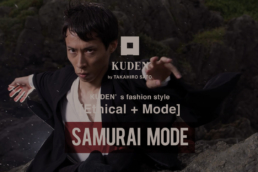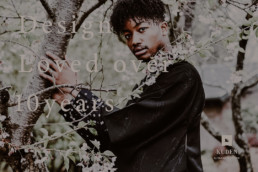Japan Italy Bridge interviews: Kenta Kambara and Nobuyuki Arai
Siamo tornati con un'altra puntata della nostra serie "Japan Italy Bridge Interviews"! Questa volta, abbiamo avuto il piacere di intervistare l'incredibile Kenta Kambara, un ballerino giapponese su sedia a rotelle, e Nobuyuki Arai, regista video. Questi due hanno collaborato con il marchio Gerbera Design, KUDEN di TAKAHIRO SATO. Il video promozionale che hanno creato insieme sarà presto disponibile online, ma prima di questo, sentiamo come è iniziato tutto e cosa hanno pensato dell'esperienza.
JIB: Per iniziare, presentatevi.
K: Mi chiamo Kenta Kambara e sono un ballerino freelance su sedia a rotelle che è nato con una disabilità chiamata spina bifida.
Lavoro come ingegnere di sistema nel mio lavoro quotidiano, e al di fuori di questo, sono un artista di strada e anche un acrobata aereo e mi sono esibito alla cerimonia di chiusura delle Paralimpiadi estive 2016 a Rio de Janeiro.
A: Mi chiamo Nobuyuki Arai. Dopo essermi laureato in fotografia, sono andato in Germania e nella Repubblica Ceca per continuare a scattare foto, quindi ho iniziato a lavorare come fotografo professionista nel 2014. Produco anche video dal 2017 e ho anche lavorato come un videografo di viaggio dal 2018.


JIB: Potresti dirci cosa ha portato alla tua connessione con KUDEN?
K: Tutto è iniziato quando una mia conoscenza mi ha detto per la prima volta che sono stato invitato ad esibirmi. Successivamente, ho ricevuto un messaggio lungo ed entusiasta dal signor Sato, ed è stato il suo messaggio che mi ha fatto decidere con certezza.
Ero piuttosto occupato durante quel periodo, ed è stato anche un periodo in cui ho ricevuto molte altre offerte per esibirmi anche in video, quindi non ero sicuro. Ma il suo messaggio appassionato e lui che mi diceva che poteva essere flessibile con il programma delle riprese sono stati ciò che mi ha fatto dire, "Sì, accetterò la tua offerta".
A: Inizialmente conoscevo già il signor Kambara, il ballerino e mi ha chiesto se avrei preso parte anche a questo progetto. Al momento, dovevo ancora conoscere il sig. Sato, ma ha guardato i miei video su YouTube e poi mi ha chiesto di parlarmi tramite il sig. Kambara. Fu così che iniziò per me.
JIB: Per favore, dicci di più su questa collaborazione che stai facendo con KUDEN ora.
K: Dopo aver accettato l'offerta del signor Sato, aver parlato del concetto del marchio con lui e aver ricevuto lo storyboard dal signor Arai, ho iniziato a pensare alla mia coreografia come ballerino.
Gli abiti della Samurai Mode sarebbero stati i protagonisti di questo video, quindi mi chiedevo: "Quali movimenti metterebbero l'accento su di loro?". Ho pensato di creare un'atmosfera simile all'oscillazione nel vento per far risaltare le caratteristiche uniche degli abiti, come alzare il braccio e lasciare che il vento soffiasse contro le maniche. Mi chiedevo, cosa uscirà da tali movimenti che catturano un tale effetto o movimenti più morbidi e leggeri?
In aggiunta a ciò, ho combinato quelle idee con coreografie e movimenti che già conoscevo, e ho guardato la topografia locale mentre consideravo "come avrei ballato in questo posto (scelto dal signor Arai)".
A: Proprio come è la Samurai Mode Jacket, il sig.Sato ha molte convinzioni e sentimenti molto appassionati, quindi mi chiedevo: "Dovrei creare qualcosa che personalmente mi piace davvero molto?"
Naturalmente, alla fine, mi è venuto in mente qualcosa che mi piaceva personalmente, ma ho anche riflettuto su ciò che il signor Sato stava cercando. Ad esempio, proprio prima delle riprese, è triste ma abbiamo sentito che la fabbrica di cucito è fallita e ho pensato che sarebbe stato bello poter esprimere le emozioni del signor Sato che circondano questi vestiti nel video. E quello che stava per esprimere quelle emozioni erano i movimenti del signor Kambara, quindi ho dovuto pensare a come poter ingrandire le mosse del signor Kambara. Per il luogo di ripresa, ho scelto un posto che fosse ampio e in cui le trame della natura fossero fortemente presenti. Da lì, ho preso le idee e ho creato il prodotto finale.
La giacca Samurai Mode, la danza di Mr. Kambara, le emozioni di Mr.Sato; c'erano così tanti "elementi idea" e combinarli insieme ha creato il video.
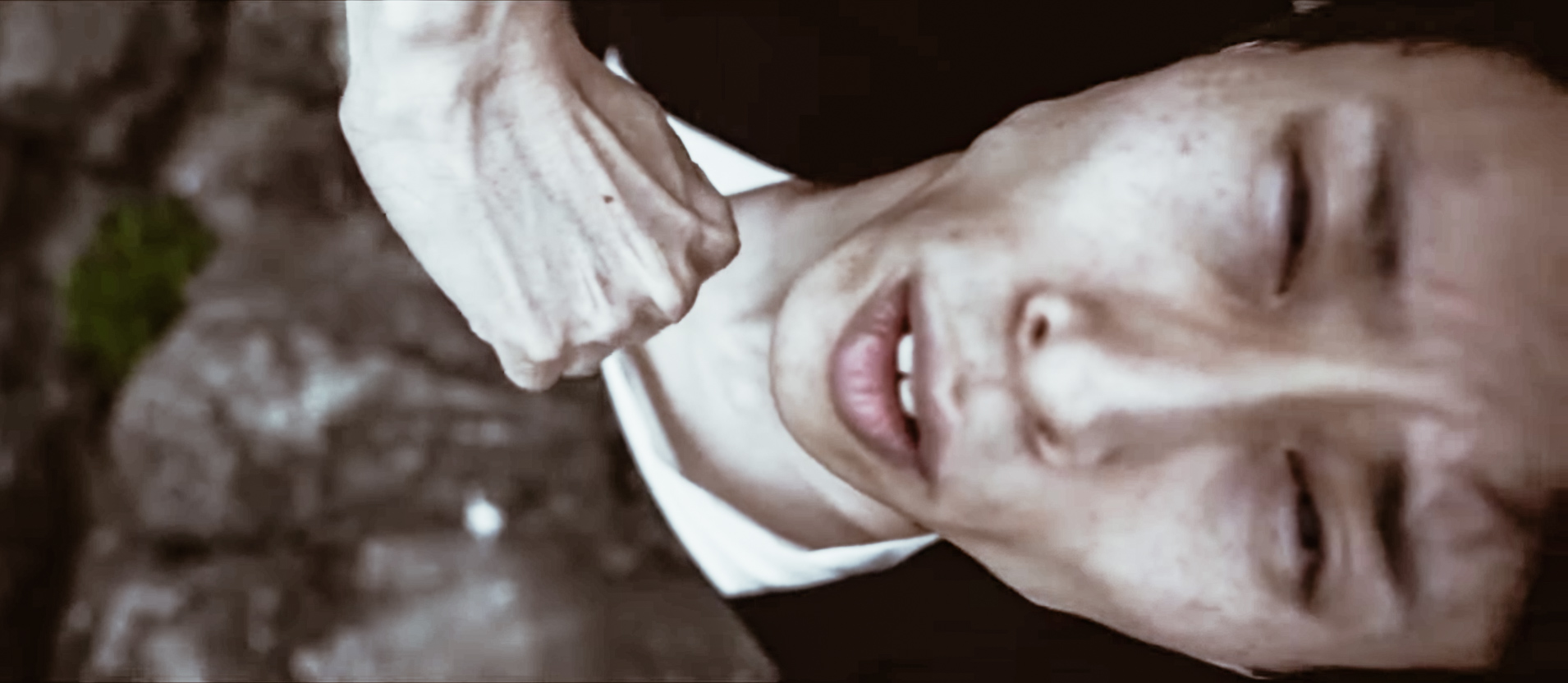

JIB: Cosa ti ha spinto a voler lavorare con KUDEN per questo video promozionale?
K: Come ho già detto, probabilmente stavo leggendo il messaggio personale del signor Sato che mi ha fatto decidere che volevo farlo. Perché è stato davvero un messaggio molto lungo, molto entusiasta (lol). E sebbene ciò che si potrebbe fare non sia molto a causa del nostro programma, sono grato che mi sia stata data la possibilità di lavorare con una persona così appassionata, dopo tutto.
A: Prima della produzione di questo video, in realtà avevo già fatto alcune riprese con il signor Kambara. Il signor Sato le ha viste ma... erano semplici riprese fatte in quel momento, ed entrambi il signor Kambara e Sato hanno parlato del voler fare delle riprese adeguate un giorno. Quindi, quando il signor Kambara mi ha contattato per questo nuovo progetto, sono stato più che felice di unirmi e di farne parte.
È stato allora che ho avuto modo di incontrare il signor Sato e, mentre gli parlavo, ho potuto dire che era una persona molto passionale con forti convinzioni. Per me, il signor Sato è più vecchio di me e un mentore, ma il signor Sato mi ha detto, "Usami (questo progetto) per divertirmi", il che mi ha fatto sentire che fintanto che dovevo produrre un video con Mr Kambara e il signor Sato, sarei onestamente in grado di creare qualcosa di interessante.

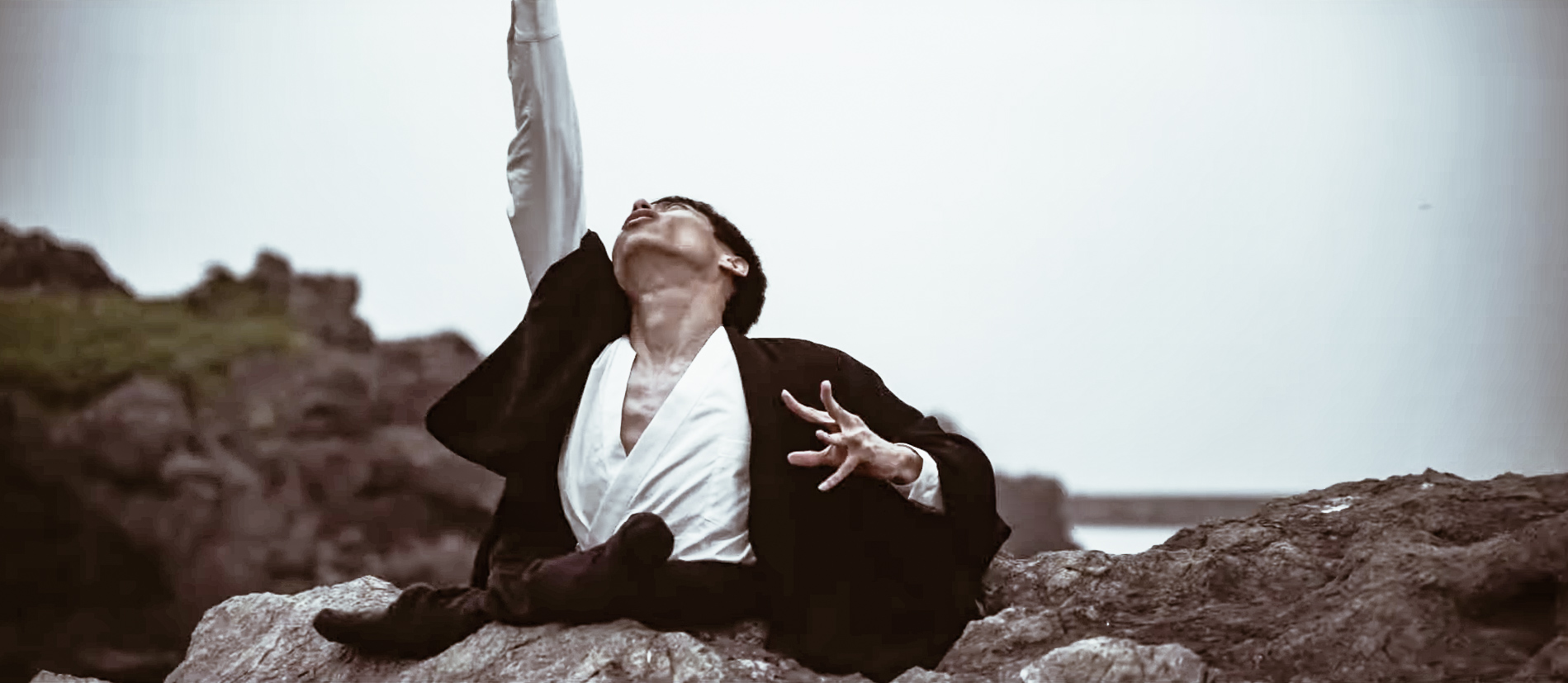
JIB: Dopo aver completato questo servizio, cosa ne pensi dell'esperienza?
K: Dopo aver visto il video, probabilmente capirete che è stato un lavoro piuttosto duro (lol). Soprattutto perché ha piovuto molto quel giorno. Ma il filmato si è rivelato così come è stato, e pensandoci ora, è stato divertente e questo è qualcosa che era possibile solo a causa di quel diluvio. È stato difficile, ma è stato anche divertente.
A: Ogni volta che parlo di film, sono sempre molto nervoso. Per questo motivo, ho sentito un po' di pressione fin dall'inizio. Invece di creare qualcosa da zero, questa volta, avevo in mente la danza del signor Kambara, che mi aveva mostrato numerose volte e aveva già scelto una canzone che sarebbe stata la più adatta. Ho trascorso giorni chiuso a casa, ascoltando diverse centinaia di canzoni per decidere.
Ho anche avuto la sensazione che "non posso offrire qualcosa di deludente!". Anche il giorno delle riprese, ho continuato a guardare le riprese del filmato pensando: "Come posso migliorare?".
In passato, quando ho fatto delle riprese con il signor Kambara, non mi ha mai detto "Non posso farlo" quando gli ho chiesto qualcosa, quindi ho finito per avere sempre più richieste, come "Mi piacerebbe che lo facessi”, o “Vorrei un po' di più da te”. Ma, alla fine, immagino che sia perché il signor Kambara soddisfa queste mie richieste (lol). Il tempo non è stato eccezionale, ma sento che siamo riusciti a creare qualcosa di meraviglioso.
JIB: Quali sono i vostri piani futuri? Vi vedremo collaborare di nuovo insieme in futuro?
K: In futuro, voglio continuare ad affrontare anche la sfida di progetti più interessanti. In termini di obiettivi specifici, spero di esibirmi alla cerimonia di apertura o chiusura dei Giochi Olimpici e Paralimpici di Tokyo del 2020.
Soprattutto per i Giochi olimpici. Non ci sono eventi ai Giochi Olimpici a cui gli atleti su sedia a rotelle possono partecipare, ma possiamo ancora prendere parte alla cerimonia, al momento è così.
Invece di limitarmi all'idea che "Posso partecipare alle Paralimpiadi solo perché sono su sedia a rotelle", sto fissando le mie visioni sulle Olimpiadi per ballare su quel palco e creare più interesse per i Paralimpici in questo modo. Penso che questo renda tutto molto più significativo.
E filmare di nuovo qualcosa con questa squadra... Certo, vorrei. Voglio, ma quando mi chiedo: "Sarai in grado di fornire qualcosa che supera questo?", Non posso dire con certezza al cento per cento né sicurezza che sarò in grado di elaborare una coreografia ancora migliore di questa volta. In altre parole, sono soddisfatto di questo video. Sento che abbiamo fatto qualcosa di molto meglio di quanto avrei mai potuto immaginare.
A: Quando registri un video, puoi seguire le tue regole, ma quando creo qualcosa, voglio far sentire alle persone che "le regole non contano". Ed è per questo che, per questo progetto, ho deciso di mettere da parte tutto ciò che avevo sempre fatto per creare costantemente qualcosa di nuovo con una mentalità nuova e senza essere vincolato da regole o metodi.
Per me, sento che abbiamo davvero prodotto qualcosa di eccezionale per questo video promozionale (PV), ma ovviamente, mentre lo faccio, spero ancora di creare qualcosa di ancora migliore per il mio prossimo lavoro e lavorare per ottenere qualcosa di meglio in futuro, quindi con questi pensieri in mente, credo che sarò sicuramente in grado di creare qualcosa di straordinario per la mia prossima produzione.
Piuttosto che dire esattamente quando avverrà la seconda fase o quale sarà, penso che starei meglio se potessi sentire e guardare le emozioni del signor Sato e del signor Kambara in quel momento con una nuova prospettiva e poi portarlo in vita in un video.
JIB: Per il nostro blog, vi preghiamo di dirci cosa ne pensi del rapporto tra Giappone e Italia.
K: La mia impressione è che il rapporto tra Italia e Giappone non sia distante, ma i due Paesi non sono molto vicini. Ma i giapponesi adorano la cucina italiana. Certo, adoro anche io la cucina italiana. Non sono mai stato in Italia, ma voglio visitarla un giorno. E, se possibile, voglio ballare anche lì!
A: L'impressione che ho dell'Italia è che sia bela. Sia con la moda o il cibo, o le macchine e così via. I giapponesi ricevono buone influenze da loro.
Su una nota personale, ho esperienza di lavoro con un presidente di una società italiana. Era davvero unico, intelligente e gentile. Aveva un'immagine amichevole e sono persino andato in Italia quando mi ha invitato al suo matrimonio. Rispetto a un matrimonio giapponese, era molto più informale e aveva un'atmosfera piacevole.
Ho potuto vedere tutti i tipi di celebrazioni nuziali durante la realizzazione di servizi fotografici nuziali e, per questo motivo, le cerimonie nuziali mi hanno lasciato una profonda impressione.
Inizialmente volevo essere influenzato positivamente dallo stile italiano e penso che non ci siano molti giapponesi come me che hanno ricevuto influenze così meravigliose dagli italiani.
Attraverso questi, ho ricevuto personalmente molta influenza positiva dall'Italia, ma non so ancora che tipo di influenza positiva i giapponesi possano lasciare sull'Italia, quindi penso che andando avanti, sarebbe bello se io, come videografo e come qualcuno che trasmette informazioni, potessi fornire i buoni punti del Giappone all'Italia. Il video di questa volta può anche essere considerato come uno di quelli. Penso che sarebbe fantastico se fossimo in grado di trasmettere l'aura del samurai giapponese attraverso la danza del signor Kenta Kambara, che ricorda il maneggiare una spada in battaglia, e attraverso la giacca che indossa, ispirata al tradizionale Kimono giapponese.
JIB: Infine, ti preghiamo di lasciare un messaggio ai nostri lettori.
K: Sono molto entusiasta di sapere che gli italiani guarderanno il nostro video. Sarei felice se sentiranno qualcosa che gli viene trasmesso perché sarà attraverso la danza anziché una lingua.
A: Sono molto contento che il video che abbiamo realizzato sarà visto da molte persone all'interno del Paese e anche dall'estero!
Anche il discorso sul prossimo progetto è sorto all'interno del team, quindi colgo l'occasione per dire che speriamo che terrete d'occhio le nostre attività imminenti. Continueremo a creare produzioni straordinarie, quindi per favore rimanete sintonizzati.


E quella è stata la nostra intervista intima con Kenta Kambara e Nobuyuki Arai! Dopo averlo letto, come ti senti? Cosa pensi? Condividi i tuoi commenti con noi sulla nostra Pagina Facebook!
Inoltre, prima di andare, sappiate che la Samurai Mode Jacket menzionata nell'intervista è ora disponibile nel loro negozio online insieme alla loro nuova Samurai Mode Shirt! Offrono anche splendidi Kimono e Haori vintage nel loro negozio, quindi assicurati di dare un'occhiata! Non sapete mai cosa potreste trovare!
- Contatto -
E-mail: support@ku-den.jp
- Links -
Website: https://ku-den.jp/
Facebook: https://www.facebook.com/kudenjp/
Instagram: KUDEN by TAKAHIRO SATO[:en]We are back with another installment of our series "Japan Italy Bridge Interviews"! This time, we had the pleasure of interviewing the amazing Kenta Kambara, a wheelchair dancer from Japan, and Nobuyuki Arai, video director. These two collaborated with Gerbera Design's brand, KUDEN by TAKAHIRO SATO. The promotional video that they created together will soon be available online, but before that, let's hear about how it all began and what they thought of the experience.
Japan Italy Bridge interviews: KUDEN - Part 2
Finalmente rieccoci con la seconda parte dell'intervista dedicata a Takahiro Sato, CEO di Gerbera design Inc. e KUDEN. Se vi siete persi la prima parte, cliccate qui per leggerla! Ma ora passiamo senza indugi a leggere ciò che Takahiro Sato ha voluto condividere con noi.

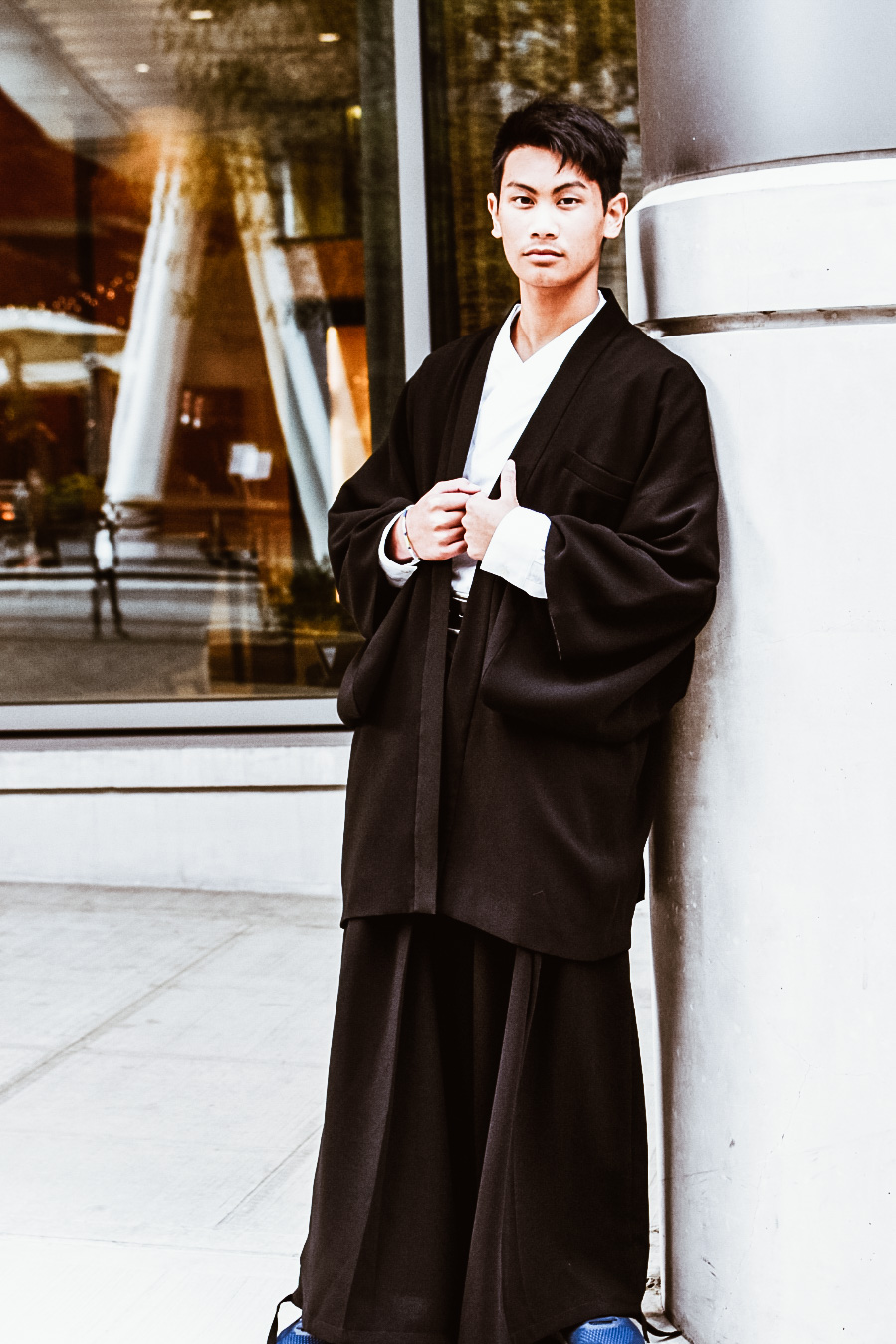
ー ー Credo che ci siano difficoltà da superare quando si tratta di far crescere una presenza globale. Puoi parlarci di questo?
Ritengo che espandere l'attività mentre si superano diverse culture, abitudini e interpretazioni sia una sfida molto difficile. Durante questi pochi anni, ho capito che ci sono 3 punti principali mentre provavo diversi metodi per espandere la mia attività all'estero. Questi sono i temi su cui mi concentro mentre lavoro sulla mia attività:
1. Una visione condivisa basata su valori universali
Penso che ciò che sia importante per raggiungere il successo internazionale in questa era di sovraccarico di informazioni sia quello di ottenere una visione basata sull’internazionalità, sui valori e sulla ragione della sua esistenza. Questo è vitale per il marchio per trasformare i clienti che condividono i suoi valori nei suoi fan.
Ciò che è cruciale in questo è concentrarsi su "valori universali" che trascendono le differenze che i paesi e le culture possono avere tra loro. Sento che non è più un'epoca in cui dovremmo mirare a diventare un grande business che produce in serie e mira ad essere amato dalle masse. Credo che ciò che sia essenziale per espandere la mia attività all'estero sia qualcosa che sarà amato da persone che condividono i nostri valori per lungo tempo negli anni a venire.
2. Trasparenza
Penso che i consumatori in questi giorni cerchino trasparenza. Ho avuto una lunga esperienza nella pubblicità e nel design per un produttore di giochi e giocattoli, e ho sentito il cambiamento nel ruolo della pubblicità e del design legato al cambiamento nei consumatori.
Per me, lo scopo originario della pubblicità e del design doveva essere un "mezzo di comunicazione" che informasse i consumatori sull'essenza della cosa o dell’obiettivo del servizio, ma in questa era di alta crescita economica, il consumo stesso è il re. In questi ultimi anni, la tendenza della pubblicità è quella di creare quella che è considerata una pubblicità buona e consumabile con un packaging fantasioso che deve essere ulteriormente enfatizzato con parole e immagini in cima ai prodotti o servizi originali. Tuttavia, penso che si possa dire che questo sia già diventato un modo di pensare datato.
Il prezzo è appropriato? La qualità è pubblicizzata? È qualcosa di cui ho bisogno? Il modo in cui il prodotto è presentato o fornito è veritiero? Credo che domande come queste siano ciò che chiedono i consumatori di quest'epoca e questo è ciò che hanno imparato a valutare e considerare importante.
3. Fornire un'esperienza
Questa è un'epoca in cui tutte le informazioni sono facilmente disponibili su Internet. Si può affermare che le persone che vivono in questa era moderna sono costantemente piene di input che ricevono quasi immediatamente, di essere ricche di contenuti video e foto o di simulazioni in VR e AR. Semplicemente entrare in contatto con una grande quantità di informazioni può far sentire una persona come se sapesse tutto, ma ciò non soddisfa l'innato desiderio di una persona di farsi emozionare dalle cose.
C'è una frase nell'ideologia Zen che dice "l'illuminazione spirituale viene solo dall'esperienza personale". Qui, vorrei citare Takuan Sōhō, una figura importante nella scuola Rinzai del Buddhismo Zen che è stata descritta nel manga Vagabond, scritto e illustrato da Takehiko Inoue è meglio conosciuto per la serie di manga Slam Dunk.
Takuan Sōhō ha parlato dell'importanza delle esperienze personali in senso metaforico, dicendo: "Non diventerai effettivamente bagnato anche se spieghi che cos'è l'acqua, né diventerai effettivamente caldo anche se spieghi cos'è il fuoco. Non essere in grado di capire correttamente cosa sono se non si tocca l'acqua reale o il fuoco reale. Parlare di cibo non farà andare via la fame".
"Cercare l'esperienza è fondamentale per gli umani"
Già, c'è una tendenza in cui le persone cercano esperienze reali. Sento che, a parte le informazioni, le persone hanno iniziato a cercare valore e consumo di "esperienze". Andando avanti, mi aspetto che le cose diventino ulteriormente bi-polarizzate e il benestante cercherà sempre più non la realtà virtuale ma invece esperienze di vita reale, ed è con questo desiderio in mente che ho iniziato la mia attività.
Tutto sommato, questi sono i 3 punti che considero mentre faccio crescere la nostra presenza globale.
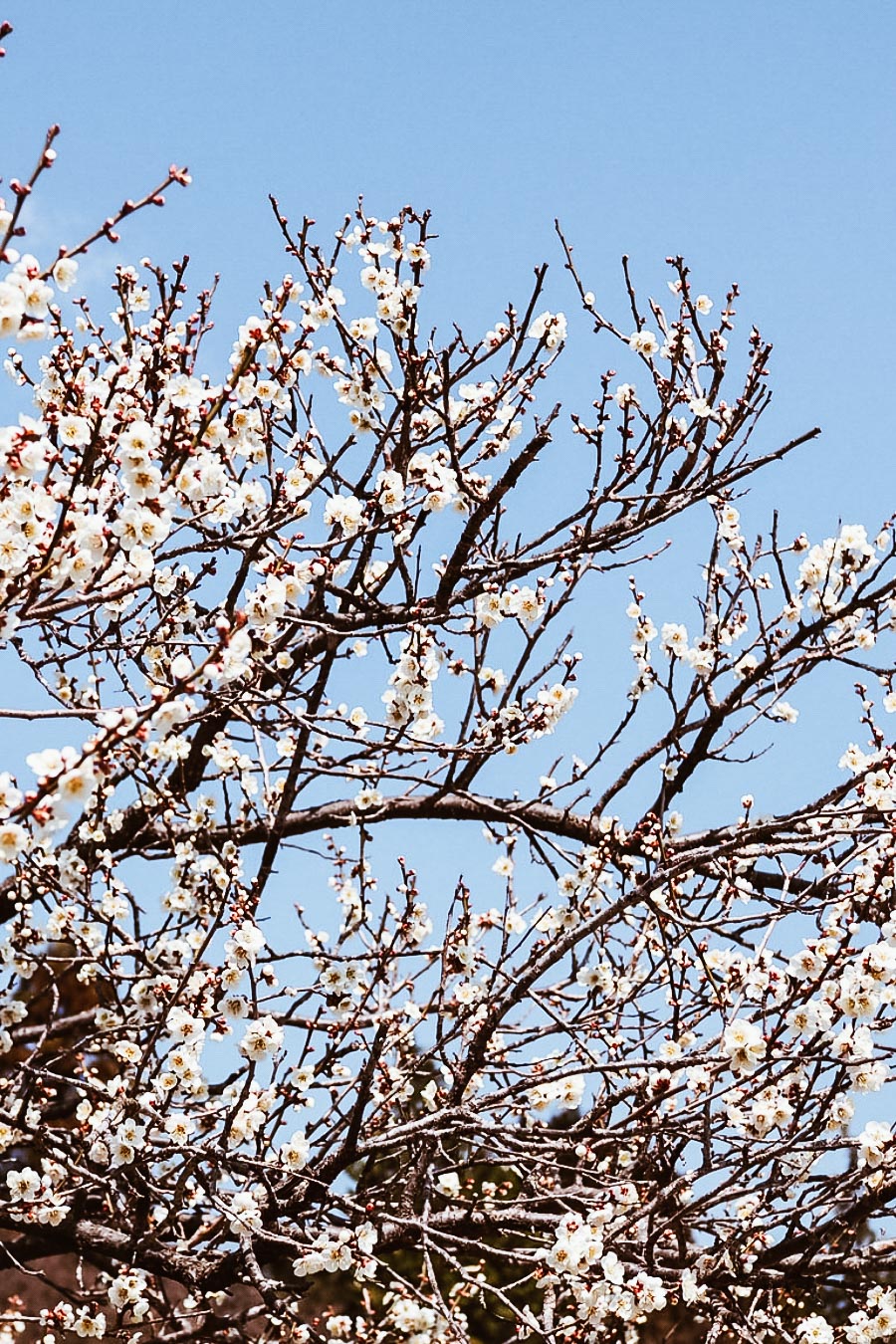

ー ー Pensi che il Giappone sia attraente per gli occidentali?
Non posso dare una dichiarazione radicale, ma a mio parere, è un "sì". Si può affermare che il Giappone è un paese in cui gli occidentali che hanno un interesse o sono nella professione del cibo, architettura, artigianato tradizionale e arte vorrebbe visitare almeno una volta nella loro vita.
Nikko, il luogo in cui sono nato è anche una delle basi di KUDEN, è un luogo con numerosi santuari locali riconosciuti come Siti Patrimonio dell'Umanità e tre dei nostri edifici più significativi sono il Santuario Futarasan, il Santuario Toshogu e il Tempio Rinnoji. Con una vasta area territoriale di 51 ettari in attività e altri 373 ettari di zona circostante. Nikko è un luogo dove la fede della gente si unisce alla maestosità della natura.
Sul monte Futarasan (Mt. Nantaisan) c’è il Santuario Futarasan che fu costruito in adorazione dei vari dei della montagna. Il tempio di Nikko Rinnoji è un luogo che vanta più di 1200 anni di storia e il Santuario di Nikko Tosho-gu è un magnifico capolavoro costruito da artisti geniali e architetti del 17 ° secolo Edo.
Il lago Chuzenji a Okunikko è un posto dove si trovano molte ville e case delle ambasciate appartenenti a diversi paesi. Le persone erano solite radunarsi a Nikko in passato per vertici e regate di yacht, e si potrebbe dire che la natura di questa località è sempre stata "internazionale". Ancora oggi, l'Embassy House Memorial Park, un meraviglioso edificio che simboleggia la fusione tra Italia e Giappone, esiste ancora. Forse un giorno, terrò una sfilata KUDEN lì.



Parlando di artigianato, quando ho fondato KUDEN per la prima volta, ho collaborato con artigiani esperti in "Kumiko", una tecnica utilizzata per creare opere d'arte complesse, in legno e funzionali, per un progetto chiamato "KUMIKO Laptop Board". Questo era il primo prodotto di KUDEN, ma poiché ogni oggetto era qualcosa che doveva essere fatto a mano da artigiani anziani, era molto dispendioso in termini di tempo di produzione e in termini di costi, con conseguente difficoltà nella vendita. Tuttavia, questo progetto mi ha portato a essere intervistato da vari media e anche a guadagnare attenzione su Reddit, dove la gente pensava che il lavoro manuale degli artigiani giapponesi fosse così raffinato ed elaborato che avrebbe potuto essere fatto solo con il taglio laser. Non riuscivano a credere che fosse tutto fatto a mano. Questo mi ha portato a credere che se a qualcuno piacciono l'architettura e l'artigianato, sono anche tenuti ad essere interessati a questo paese chiamato Giappone.
Credo anche che ci siano molte persone che hanno familiarità con giochi e animazioni giapponesi. Un'altra base di KUDEN è Tokyo Kichijoji. Qui, il Museo Ghibli si trova vicino al parco di Inokashira. Come qualcuno che una volta ha creato giochi e si è occupato della pubblicità in un'azienda di giochi, questo è qualcosa su cui mi sento profondamente coinvolto. Spero che la gente venga in Giappone e assapori da sola i giochi, i manga, l'animazione e altre aree della cultura pop giapponese.
Un altro fascino del Giappone è la ricca varietà di "cibo". Le abilità esibite dagli chef giapponesi con il loro sushi, tempura e altre abilità culinarie, insieme con gli artigiani che li sostengono con la forgiatura di utensili da cucina per loro come i coltelli, sono da non perdere. Le persone sono gentili. Ma immagino che la maggior parte di loro possa parlare solo giapponese. Nonostante ciò, credo che se si ha il coraggio di provare a comunicare con loro, si potrà scoprire che ci sono molte persone gentili.
La natura del Giappone cambia espressione da stagione a stagione. Spero che possiate a farci visita almeno una volta.
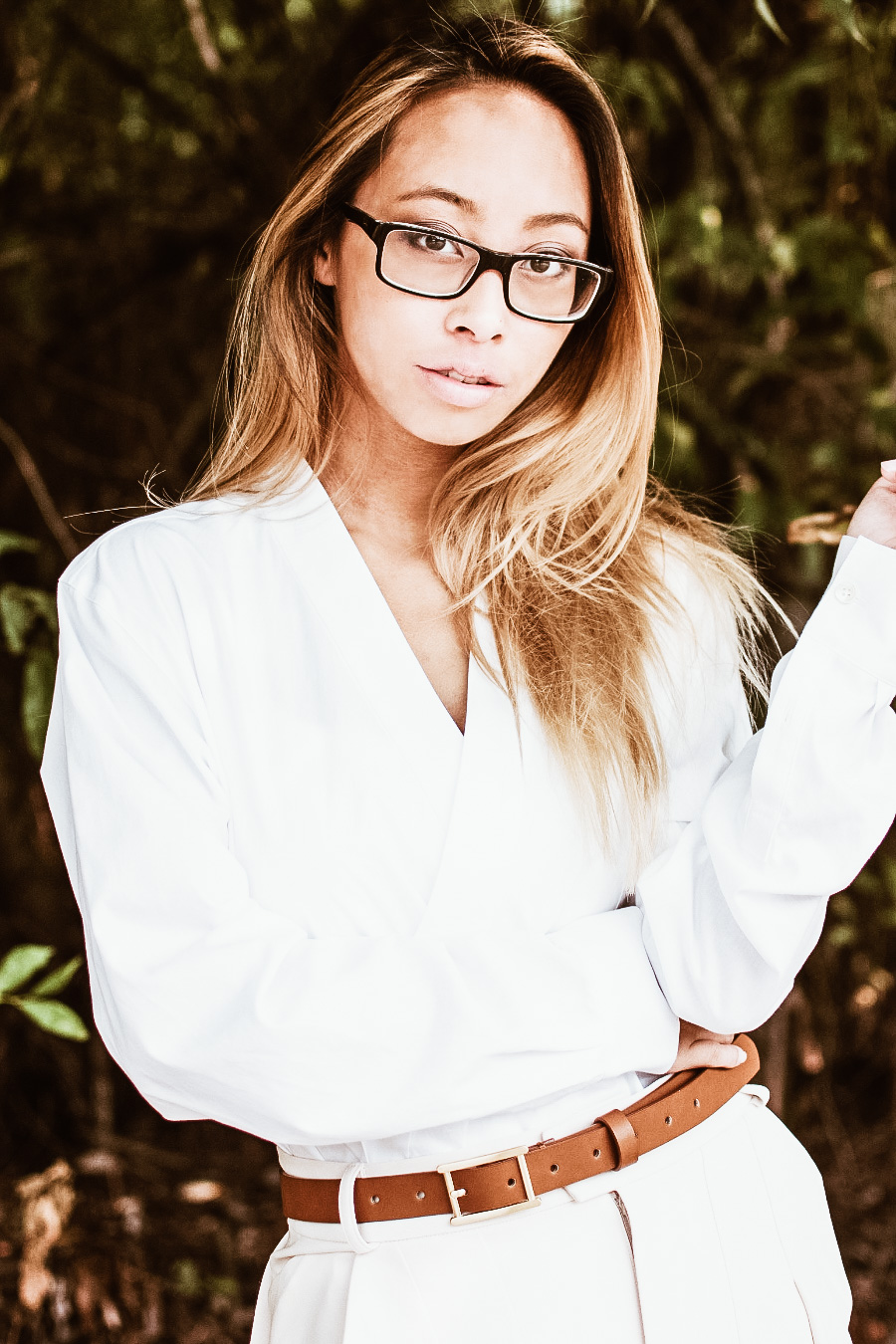

ー ー D'altra parte, cosa pensi dell'Italia come mercato?
Sia l'Italia che il Giappone sono paesi che hanno marchi nazionali forti. Anche i giapponesi hanno una preferenza per le cose "Made in Italy" perché l'impressione che abbiamo dell'Italia è che le cose con una tale etichetta sono quelle che hanno la stessa qualità di quelle etichettate con "Made in Japan". Personalmente, penso che Italia e Giappone abbiano davvero molto in comune. Le persone di entrambi i paesi apprezzano l'artigianato e amano anche il cibo e le arti.
C'è stato un periodo in cui non ero in grado di considerarmi o di definirmi un "designer" e in quel periodo ho preso in prestito la parola "progettista" dall'italiano e mi sono dato quel titolo. Il modo italiano di fare le cose è sempre stato quello che mi sembrava appropriato.
Attualmente sto progettando sandali di cuoio con il motivo dello stile giapponese, e non potrei essere più felice se potessi usare la pelle "Made in Italy" per questo. Ho un sogno di aprire un giorno la boutique di haute couture di Kuden a Milano e fare in modo che i clienti facciano i vestiti con i tessuti che scelgono. Sarei davvero onorato se sempre più persone nell'elegante Italia indossino i miei vestiti.
ー ー Tornando a KUDEN, quali sono i tuoi piani e obiettivi futuri?
KUDEN mira a diventare un progetto che lega l'impiego delle persone con disabilità alle professioni artigiane, come quelle nella produzione di indumenti o nella lavorazione del legno, attraverso un modello "Abbigliamento di marca + occupazione dei disabili". La composizione finale della compagnia includerà i seguenti componenti: KUDEN Apparel Brand, ufficio design, produzione di abbigliamento e lavorazione del legno, hub di distribuzione oltreoceano e dormitorio aziendale in cui le persone con disabilità possono vivere. Per raggiungere questo obiettivo futuro, io sono ora focalizzato sull'espansione di KUDEN by TAKAHIRO SATO all'estero.
Il mio amato figlio è la ragione per cui devo essere "un manager che apprezza molto le persone". Come accennato prima, una volta ho finito per trascurare la mia salute lavorando troppo e di conseguenza ho lasciato la mia azienda. Non ero un buon uomo d'affari che ha causato problemi al proprio staff e ai propri clienti e alla fine sono stato separato dalla mia amata famiglia. Nonostante tutto ciò, per sostenere il futuro di mio figlio, ho ripreso il mio viaggio come imprenditore e ora continuo anche per il personale di Gerbera Design che mi ha dato la forza per aggrapparmi a questo sogno.
Come qualcuno che ha avuto una tale esperienza, ci sono alcune cose che tengo a mente mentre riprendo questa sfida.
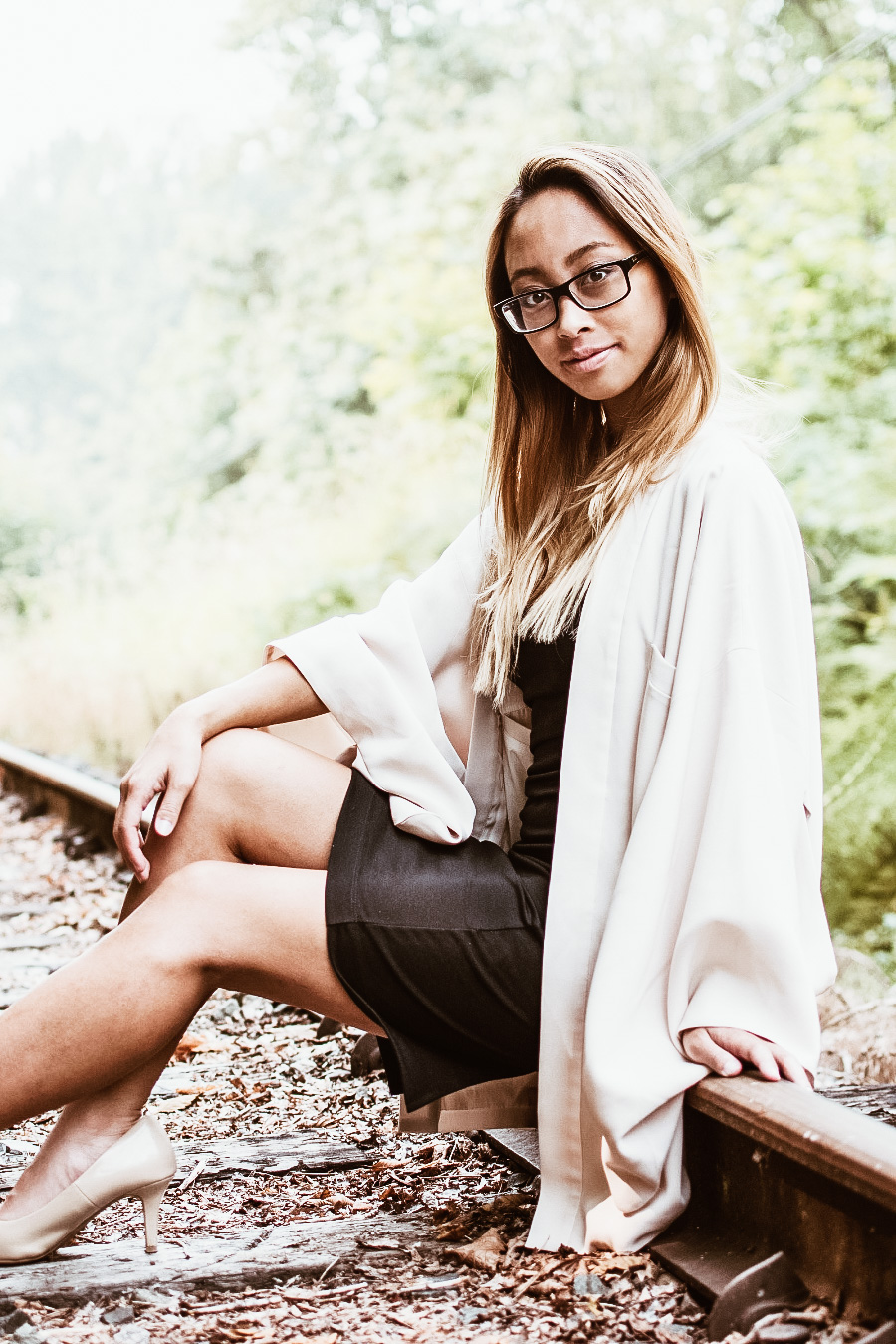

Il primo punto è la creazione di una fondazione operativa che non si basa su cose come concessioni o dispense. Il secondo punto è quello di creare una base che non sarà influenzata dalle economie delle valute estere che scambiamo.
Questi due punti sono misure che aiuteranno a migliorare la continuità aziendale. Mi è venuto in mente perché quando ero con la grande azienda di giocattoli, c'era un periodo in cui ero coinvolto nell'assunzione di persone con disabilità, e ho vissuto la dolorosa esperienza di chiudere gli uffici e licenziare le persone a causa di cambiamenti della politica aziendale. Allo stesso tempo, considerando il calo demografico del Giappone e l'economia recessiva, fare affidamento sulla moneta del Giappone e sull'economia domestica per gestire un'impresa potrebbe anche aumentare il rischio di bancarotta.
Il terzo punto è il desiderio di nutrire non solo le persone disabili, ma anche i giovani che desiderano sostenerli e tali sforzi.
Questo è in gran parte fuori dal mio ego personale. Non posso allevare il mio adorabile figlio con lui vicino a me, ma sogno di poter lavorare insieme a lui in futuro. Mio figlio, Takeru ha solo 8 anni. Anche se dovessi morire, la sua vita andrà avanti. Faccio tutto questo per ridurre al minimo la possibilità che l'azienda collassi o cambi direzione dopo il mio superamento, poiché mio figlio può ricevere supporto da qualcuno o dal paese. Come tale, mentre sono ancora in giro, pagherò le tasse per lui e aiuterò le nuove generazioni, e poi affiderò loro le cose dopo che me ne sarò andato.
Il quarto punto è il desiderio di aumentare il più possibile il numero di opzioni di lavoro per i disabili in modo che possano fare ciò che amano fare.
Durante il mio coinvolgimento nel reclutamento di persone disabili, ho avuto l'opportunità di osservare le cose e ho visto cuocere il pane, piegare i vestiti nel cortile sul retro, pulire e così via. Mi sono reso conto che c'è un lavoro che possono fare, e ora, invece di avere mio figlio e altri bambini come lui, pensare solo a quanto siano cool designer, programmatori, artigiani e altri professionisti, voglio che loro imparino ad amare le loro aspirazioni e dare loro la possibilità di essere in qualsiasi professione che vogliono.
Dalle industrie primarie come la silvicoltura e l'agricoltura, l'artigianato e il design, e infine alle vendite all'estero. Siamo piccoli, ma siamo nel bel mezzo della costruzione di un business a tutto tondo. In termini di artigianalità, abbiamo già introdotto l'impiego di persone disabili per i miei amici che sono artigiani che stanno vivendo una mancanza di successori. KUDEN si sta espandendo all'estero per sostenere questo e ho intenzione di perseverare e passare il resto della mia vita lavorando per creare un luogo dove mio figlio e altri bambini come lui possano lavorare con gioia.
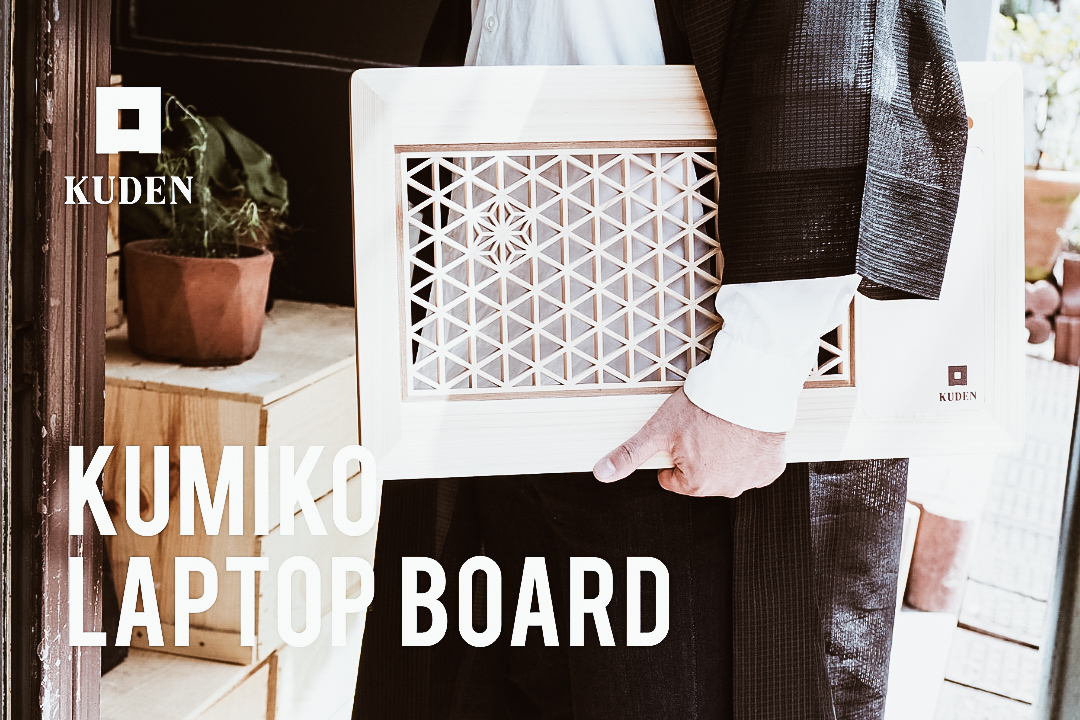
ー ー Speriamo che tu possa realizzare i tuoi sogni e raggiungere anche i tuoi obiettivi. Infine, si prega di lasciare un commento per i nostri lettori.
KUDEN ha un sogno. Nel perseguire la felicità del nostro personale, dei nostri clienti e dei nostri stakeholder, continuiamo a lavorare sulla creazione di posti di lavoro collegando le persone disabili con gli artigiani attraverso il design. Portiamo progetti che possono essere amati per più di 10 anni nel mondo per cambiarlo, e lavoriamo duramente per diventare un marchio che sarà amato per cento anni. Tutto lo sforzo che abbiamo messo ha portato alla nostra prima linea di vestiti che vogliamo che i moderni samurai indossino.
Per me, indossare abiti è come mettermi una seconda pelle. I vestiti simboleggiano l'epoca in cui vive chi li indossa e sono come l'espressione di una persona che "indossa" i propri valori, i propri desideri e le proprie speranze per il futuro.
In questa era in cui viviamo, le cose vanno e vengono molto rapidamente. Nelle mie lotte quotidiane come uomo d'affari, designer e padre, ci sono momenti in cui soccompo sotto il carico di lavoro e la pressione e inizio a sentirmi scoraggiato. Ci sono anche momenti in cui perdo di vista il mio percorso e anche i miei valori. A volte non tutti si sentono in quel modo?
In questi momenti, indossando questi vestiti, raddrizziamo le nostre spalle e nutriamo lo spirito dei Samurai con apparenze dignitose, sollevandoci motivati con la risoluzione di mantenere la fede e seguirla con tutto il nostro cuore. Volevo che questi vestiti fossero abiti che potessero esprimere questa versione di voi e me alle persone intorno a noi, e così li ho chiamati "Samurai".
Sia che si tratti di animazione giapponese, manga o film storici, sono sicuro che tutti li hanno visti almeno una volta; i Samurai che vivono la vita rimanendo saldi nelle loro convinzioni.
"Sono solo un Samurai forte, gentile e risoluto. Un samurai moderno. "
Diventerai un samurai moderno.
Vi presentiamo la Samurai Mode Jacket, un capo di abbigliamento che si esprime come una seconda pelle, che può essere indossata casualmente in giornate normali o per occasioni formali e anche in ambienti aziendali importanti. Questo è stato progettato con la speranza che sia un abbigliamento desiderabile per le persone di tutte le età, generi e nazionalità in tutto il mondo che vogliono vivere rimanendo fedeli ai loro valori e credenze, che stanno lavorando duramente per i loro cari in questo mondo frenetico. Credo che quando lo indosserete, sarete in grado di sentire il potere nel design di questi abiti.
Andando avanti, ho intenzione di continuare a progettare e produrre abiti che portino gioia a tutti con questa convinzione. Potremmo essere un piccolo marchio, ma continuerò a combattere con lo spirito dei samurai.
E questa era la nostra intervista intima con l'amministratore delegato Takahiro Sato! Cosa ne pensate? Condividividete i vostri commenti con noi sulla nostra pagina Facebook!
Inoltre, prima di andare, sappiate che la Samurai Mode Jacket menzionata nell'intervista è ora disponibile nel loro negozio online insieme alla loro nuova modalità Samurai Shirt! Offrono anche splendidi Kimono vintage e Haori nel loro negozio, quindi assicuratevi di dare un'occhiata! Non si sa mai cosa potreste trovare!
- Contatto -
E-mail: support@ku-den.jp
- Links -
Website: https://ku-den.jp/
Facebook: https://www.facebook.com/kudenjp/
Instagram: KUDEN by TAKAHIRO SATO | haoru by KUDEN
Japan Italy Bridge interviews: KUDEN - Part 1
Siamo lieti di dare il via alla nostra iniziativa "Japan Italy Bridge interviews", che introduce nel mondo aziende giapponesi uniche nel loro genere, con un'intervista speciale al CEO di Gerbera Design Inc., Takahiro Sato.
Gerbera Design Inc. è la società dietro il marchio di moda KUDEN di TAKAHIRO SATO che ha gestito la massiccia campagna Kickstarter per la sua giacca Samurai Mode. La campagna ha avuto un tale successo che è stata finanziata per oltre il 1000% del suo obiettivo originale e ha raccolto molta attenzione da vari media in tutto il mondo. In questa occasione, ci è stata data l'opportunità di parlare con l'uomo dietro questo grande successo per saperne di più sulla sua storia, il futuro del suo marchio e le sue riflessioni sul Giappone e l'Italia.

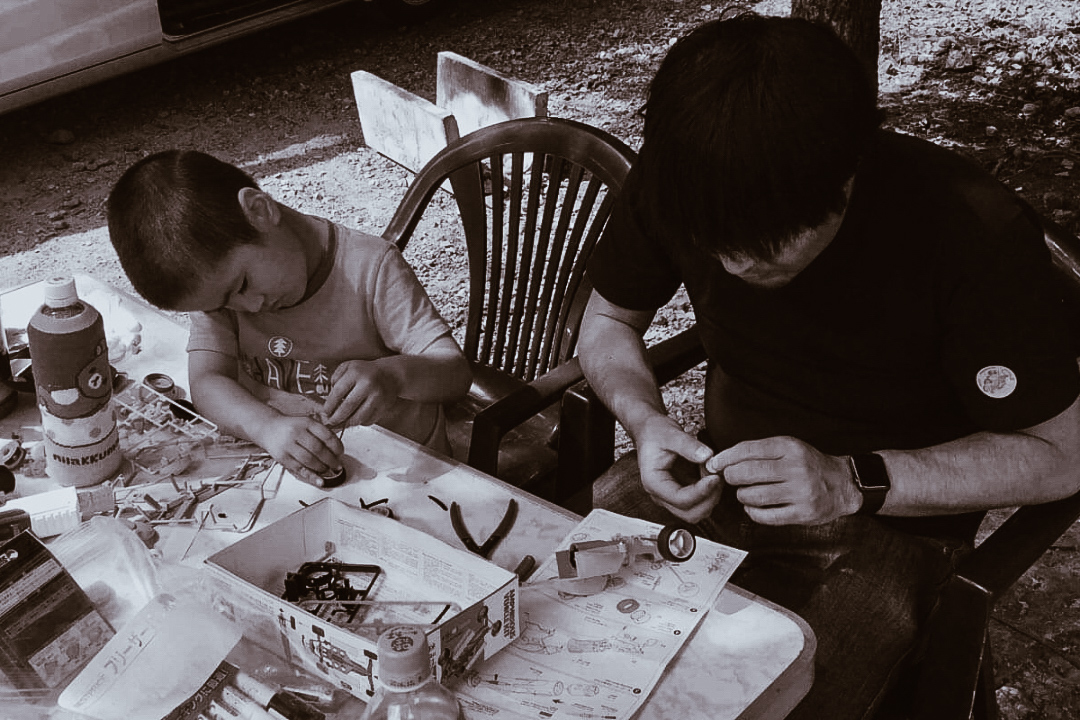
ーー Per iniziare, presenta te stesso e la tua azienda.
Ciao. Sono Takahiro Sato, il designer di KUDEN di TAKAHIRO SATO (di seguito, KUDEN) e il CEO di Gerbera Design Inc. (qui sotto, Gerbera Design). Potete chiamarmi Tak.
Utilizzando l'esperienza che ho acquisito attraverso la perdita di un precedente business e i miei anni di gestione di un'attività nel settore dell'intrattenimento cimentandomi in giochi e giocattoli, ho avviato Gerbera Design, una società che fornisce servizi di consulenza a nuove imprese producendo anche lavori creativi come parte delle nostre operazioni.
Con la speranza di poter creare un luogo in cui poter lavorare in futuro insieme a mio figlio, che ha autismo e lieve disabilità intellettiva, ho lanciato il marchio di abbigliamento, KUDEN, sotto la guida di Gerbera Design come nuovo business con cui raggiungere un mercato internazionale.
ーー Cosa ti ha spinto a iniziare questa attività?
L'inizio dei miei sforzi imprenditoriali nel 2007 è stata la prima volta nel cominciare un'attività. Era una società di design di cui ero proprietario. A quel tempo, si scoprì che entrambi i miei genitori avevano il cancro e dal momento che dovevo prendermi cura di loro, io, che lavoravo in un grande gruppo aziendale nel settore dei giocattoli e videogame, lasciai il mio lavoro e iniziai il mio viaggio come imprenditore
Nonostante il duro lavoro che ho svolto con la società di progettazione che ho gestito, la società è crollata e il business è stato chiuso. Allora, ero un uomo d'affari terribile che causava problemi al mio personale e ai miei clienti e finivo persino per vivere lontano dalla famiglia che amo.
Ciò che mi ha convinto a provare di nuovo come uomo d'affari, io che ero una persona che aveva incontrato un fallimento così grande, è stato il desiderio di creare un luogo in cui poter, in futuro, lavorare insieme a mio figlio che è affetto da autismo autismo e ha una lieve disabilità intellettiva, dal quale io sono al momento separato. Tuttavia, ritengo che le attuali operazioni di Gerbera Design nella consulenza manageriale e nel business creativo non siano attività idonee per impiegare le persone con disabilità. E così, continuo a cercare nuove vie di business.
Durante la mia ricerca per un nuovo business, ho iniziato a pensare a cosa serve per il futuro e cosa posso fare come designer per realizzarlo. Come designer, ho a cuore le cose che uso e mi prendo cura di loro. Personalmente amo i progetti di lunga vita, e quando ho pensato di voler avviare un'attività che porta tali disegni nel mondo, ho trovato il kimono che apparteneva alla mia defunta madre. Guardandolo, sono stato ispirato e ho ritenuto che sarebbe stato interessante ristabilire e ridefinire il kimono in maniera moderna, progettare qualcosa che avrebbe fatto dire alle persone "voglio indossarlo". Questa è la scintilla che ha dato vita alla serie di modelli Samurai. Questi vestiti sono stati poi commercializzati nel mondo con il marchio KUDEN di TAKAHIRO SATO.
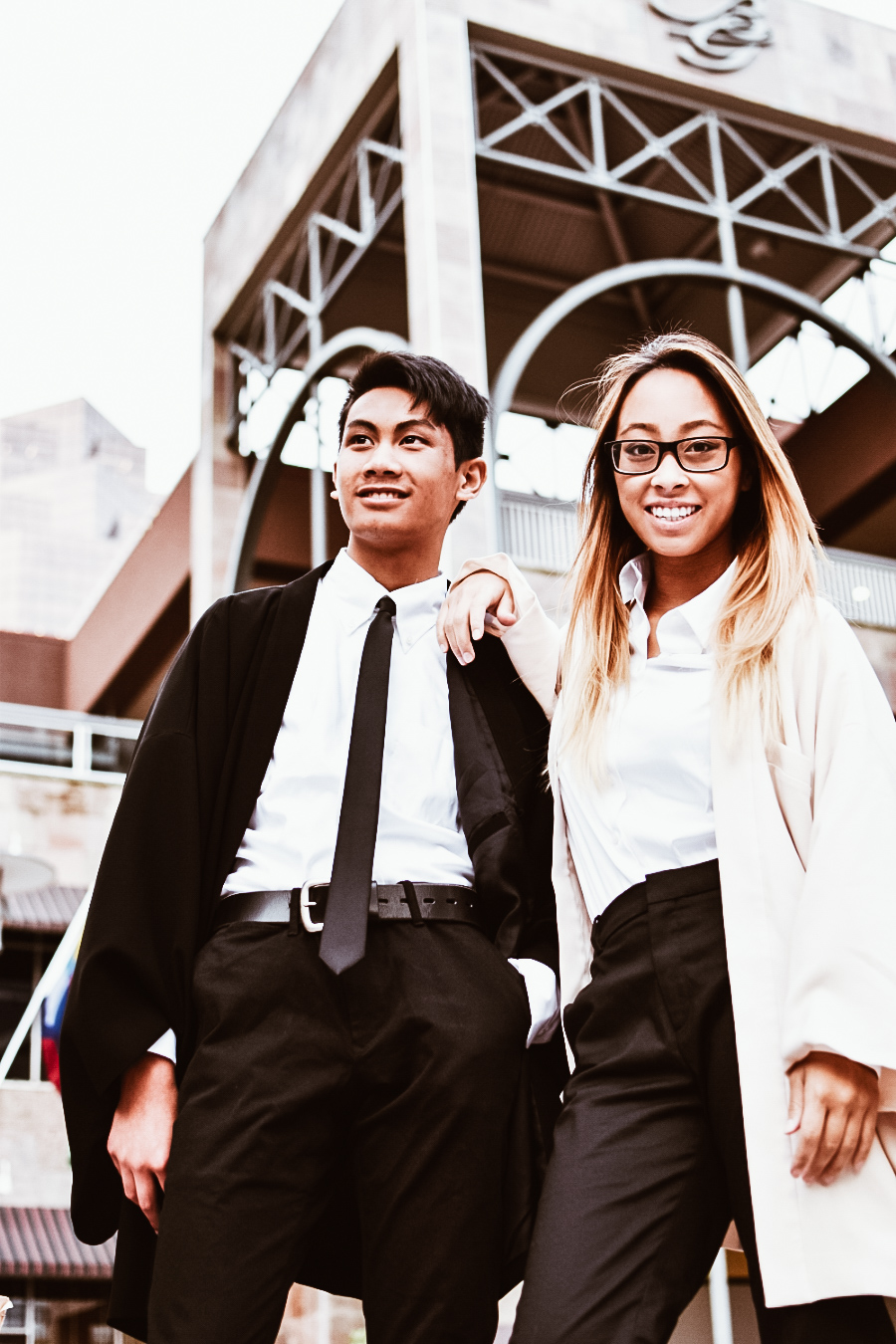
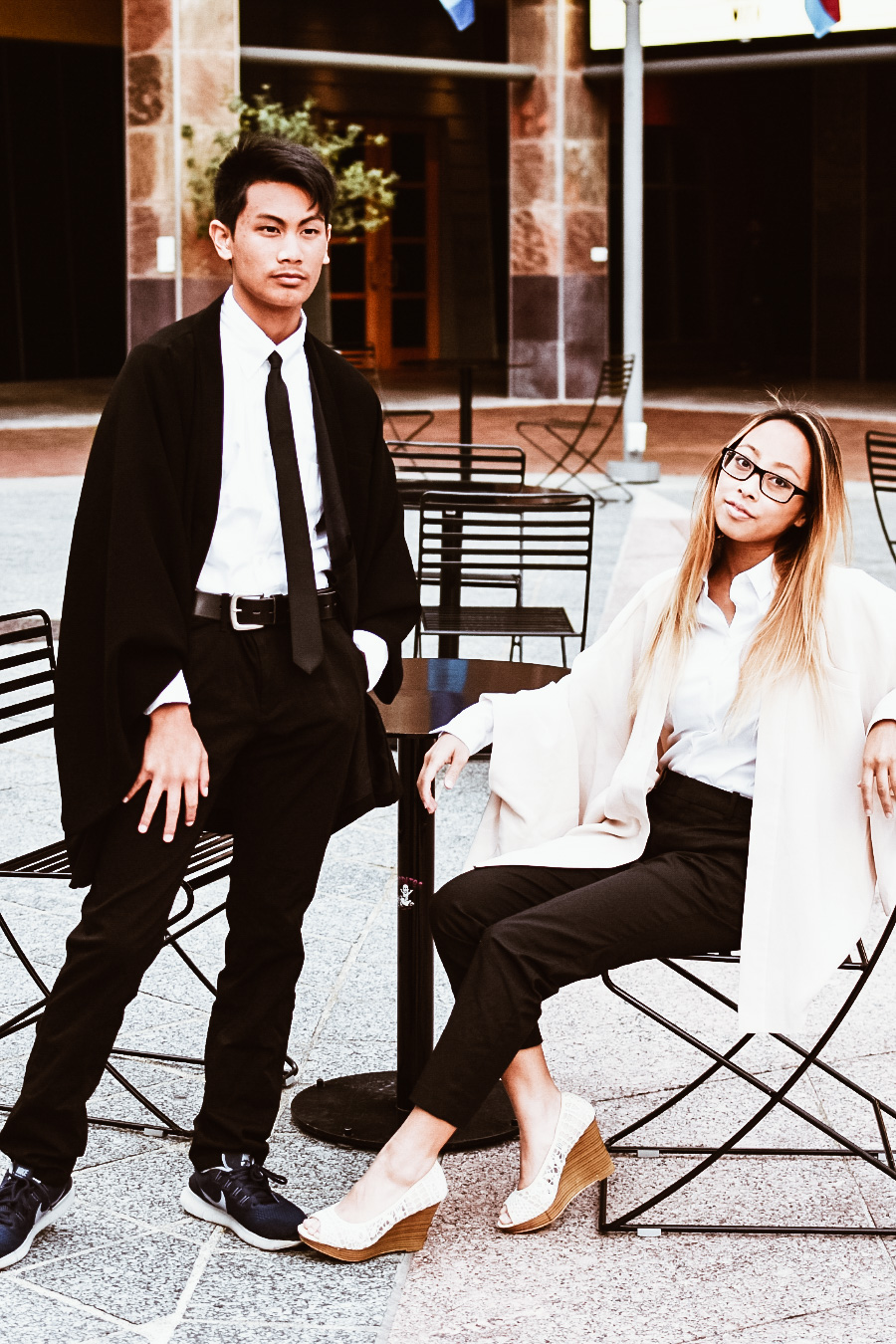
Il motivo per cui ho ampliato il marchio con il mercato internazionale come obiettivo principale è che desideravo creare un luogo in cui mio figlio disabile potesse lavorare con me, e quindi ho creato una strategia per creare un'azienda in cui le persone disabili possano lavorare ed essere assunti.
Considerando che il Giappone ha problemi come il suo tasso di natalità in declino e l'economia non sana, dubito che il sostegno a persone portatrici di handicap come mio figlio possa andare meglio in futuro. Anche per le persone normodotate come me, le difficoltà sono all'orizzonte poiché si parla che il governo non sarà in grado di mantenere la nostra pensione e la sicurezza sociale.
Tenendo tutto ciò a mente, non posso solo concentrarmi sul mercato locale e quindi devo rendere redditizia l'azienda con una base di clienti all'estero. Altrimenti, anche i dipendenti delle nuove generazioni che assumeremo dovranno alla fine essere lasciati andare. Per evitare che ciò accada, ho creato questo business sin dall'inizio, dalla sua fase di avvio, con particolare attenzione al mercato globale.
Ho ancora molta strada da fare, ma poiché questa è l'unica promessa che ho fatto a mio figlio, la realizzerò sicuramente prima che il mio tempo scada.
ーー A cosa presti particolare attenzione nella gestione di questa attività?
Come qualcuno che ha chiuso una volta un'attività, l'unica convinzione che tengo a mente quando riprovo ad essere un imprenditore è quella di essere "un manager che apprezza molto le persone", che si tratti del mio personale, dei miei clienti o dei miei partner e collaboratori. Questo è uno sforzo continuo che mantiene la felicità dei miei stakeholder e pone la continuità a lungo termine dell'azienda anzichè concentrarsi su risultati o guadagni a breve termine. Ciò, inoltre, dimostra la mia determinazione e la ferma volontà di portare felicità alle persone socialmente svantaggiate, come le persone disabili e gli anziani, attraverso l'occupazione e il commercio.
La ragione dietro a queste mie convinzioni sono le esperienze amare che ho avuto. Il lungo orario di lavoro è diventato un problema sociale nell'attuale Giappone e anch'io ho vissuto un periodo di lavoro eccessivo al punto di crollare e perdere la mia società. Ho anche sperimentato la realtà della mia ex-moglie che ha chiesto il divorzio a causa dei tempi difficili che le ho fatto passare, dovendo quindi vivere separato da mio figlio, ma non avrei dovuto lasciare che le cose accadessero in questo modo. Anche se lavoravo per il bene della mia famiglia e dei miei dipendenti, ho finito per perdere tutto. Il rimpianto pesa su di me. Non desidero che il mio staff e i miei clienti provino il dolore di distruggere la loro salute e di perdere la loro famiglia a causa del troppo lavoro. Sulla base di questi sentimenti e della mia esperienza con la mia precedente azienda, ho corretto le cose e applicato nuovi metodi di lavoro e di funzionamento.
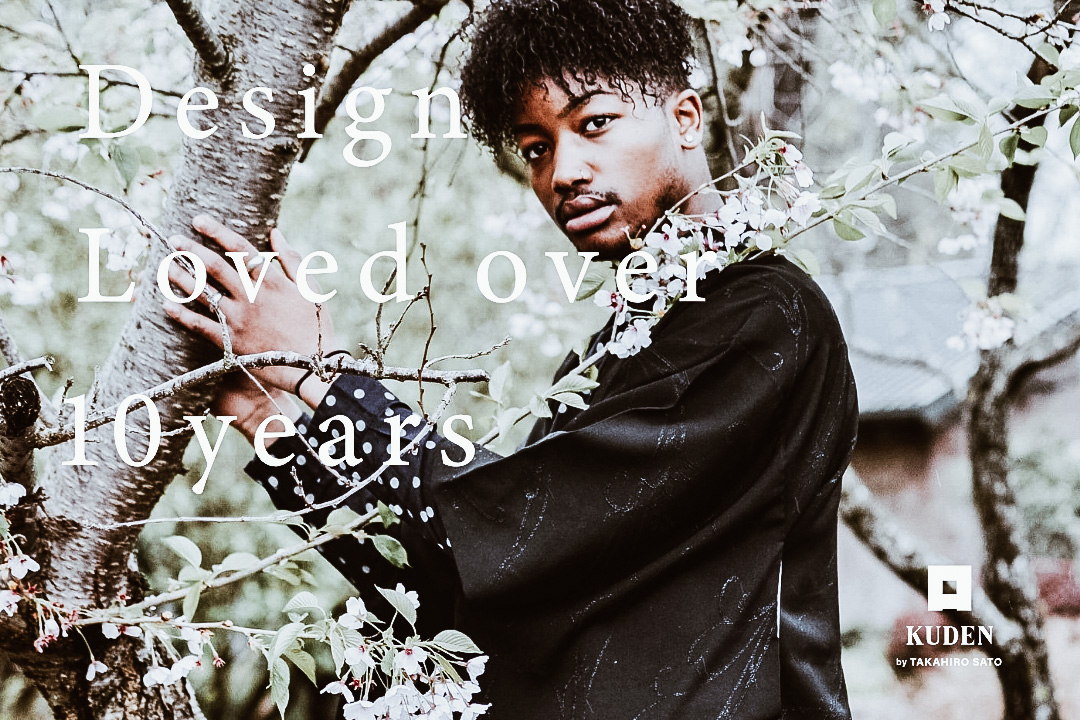
La mia azienda opera in una settimana lavorativa di 4 giorni che consente 3 giorni di riposo continui in una settimana se possiamo completare il nostro lavoro. Usando questi giorni di riposo, ci sono membri della mia società che sono padri che, per la prima volta, possono trovare il tempo da trascorrere con i loro figli. Ci sono anche altri che possono visitare Disneyland con i loro partner ogni venerdì, che prendono lezioni durante i fine settimana per lavorare al loro sogno di diventare un doppiatore, e ci sono quelli che, come me, vivono a parte i loro figli disabili, che possono adempiere ai bisogni dei loro figli come e quando necessario. Voglio che facciano di più che lavorare. Voglio che vivano e vivano anche la vita. Sto ancora esplorando metodi di funzionamento e guadagno che renderanno questi obiettivi una realtà attraverso prove ed errori. I lavori a contratto sono diffusi nelle società di progettazione e la realizzazione di questi obiettivi ridurrà tali posizioni nella mia azienda, convertendo allo stesso tempo il mio modello di business in uno che fornisce sia servizi di consulenza gestionale che produzione creativa.
Quando mi sono ammalato dopo che la mia precedente azienda ha chiuso, ho pensato a molte cose mentre giacevo in quel letto d'ospedale. Mi sono reso conto che la maggior parte delle nostre vendite è stata generata da pochi clienti che costituivano la percentuale più alta della nostra clientela. Fu allora che decisi che avrei solo dovuto impegnarmi per compiacere i clienti che apprezzano il nostro lavoro e sono felici di pagarlo, cambiando così l'attenzione su come lavoravo e rendendo ciò possibile. Fondamentalmente, i metodi di guadagno che hanno metodi di lavoro eccezionali devono evolvere con i tempi. Altrimenti, non saremo in grado di correggere problemi, come lunghi orari di lavoro, che diventano punti critici. Stiamo facendo piccoli passi, ma continuerò a lavorare con il mio staff per cercare metodi che funzionino.
Il passo successivo è essere "un manager che apprezza molto le persone" e, espandendo la mia nuova attività, KUDEN, ho iniziato con la fabbrica di abbigliamento per connettere gli artigiani con l'impiego di persone disabili e ho accettato la sfida di mandare avanti il business come uno che ha a cuore tutte le parti interessate. Altri possono ridere di me e chiamarmi ingenuo, ma io sono impegnato in questo.
<Materiali di riferimento>
Il miglioramento operativo di Gerbera Design Inc. (in precedenza, Sato Creative Design Office Gerbera) è apparso sulla prima pagina dell'edizione mattutina del Tokyo Shimbun a dicembre 2016 come parte del libro di Yōhei Tsunemi sulle pratiche di business del critico d'autore e di lavoro. Piccole e medie imprese, “なぜ、残業はなくならないのか(祥伝社新書)”.
【探訪 都の企業】
<働き方改革編>(上)出社週4回、8時間勤務 会社の稼ぎ方変える
Esplora: affari in città
Lavorare 4 giorni a settimana, 8 ore al giorno: cambiare il modo in cui la società guadagna
【なぜ、残業はなくならないのか(祥伝社新書) 】
Perché il tempo libero non andrà via? / Naze, Zangyō wa Nakunaranai no ka (Shōdensha Shinsho)
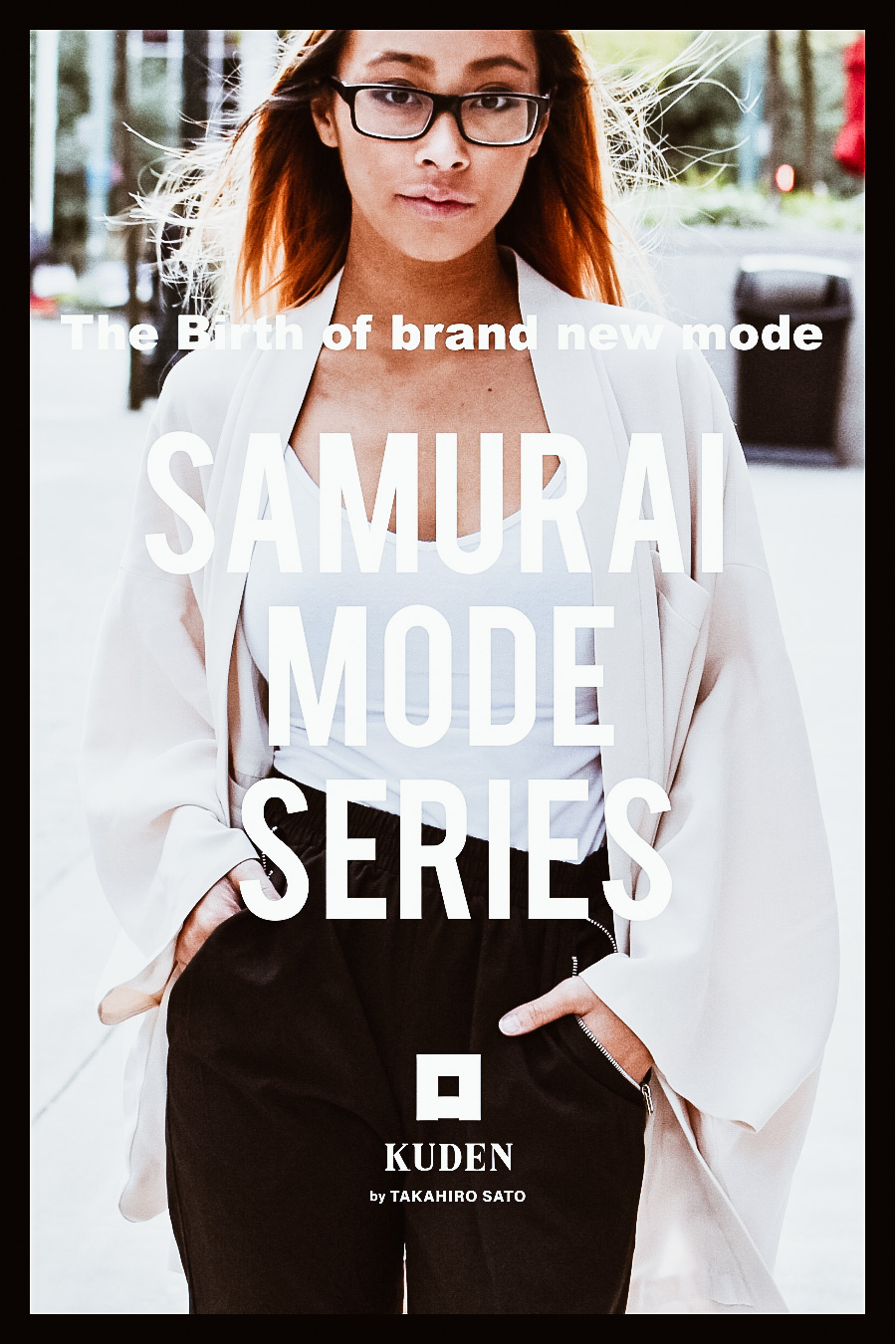
ーー Come pensi che il mercato globale percepisca KUDEN? Inoltre, che tipo di impressione vorresti che il mondo avesse di KUDEN?
Penso che KUDEN non si presenti come un marchio che si trova nella sfera della "moda" per il mercato globale. Invece, KUDEN è amato da persone che sentono che anime, manga, cibo, artigianato, ideologia Zen, arte e altri aspetti culturali del Giappone risuonano con i loro valori personali.
Mentre abbiamo incontrato varie difficoltà durante la vendita in pre-ordine di Samurai Mode Jacket, il mio staff ed io siamo stati profondamente toccati dai numerosi messaggi che abbiamo ricevuto da clienti di tutto il mondo che ci hanno detto come stavano pazientemente aspettando in attesa delle loro giacche. Mi hanno incoraggiato, dicendo che il mio desiderio di lavorare duramente per mio figlio mi rende un "samurai" per loro, tra gli altri messaggi così affettuosi.
Come marchio che non si rivolge solo alle persone che amano i vestiti, l'integrità e la risoluzione che KUDEN possiede è ciò che chiamiamo "essere dignitosi", e in italiano, lo abbiamo chiamato "vita pensosa". Sento che questa prospettiva che il nostro marchio ha e il desiderio di collegare la mancanza di artigiani continuativi con l'impiego di persone disabili attraverso il design mi ha permesso di trovare amici gentili e affini in tutto il mondo che condividono la mia visione.
Voglio intensificare i miei sforzi e lavorare di più per non tradire le aspettative di tutte queste persone che sostengono queste visioni e prospettive di KUDEN.
E questa era la prima parte della nostra intervista intima con l'amministratore delegato Takahiro Sato! Cosa ne pensate? Condividividete i vostri commenti con noi sulla nostra pagina Facebook!
Inoltre, prima di andare, sappiate che la Samurai Mode Jacket menzionata nell'intervista è ora disponibile nel loro negozio online insieme alla loro nuova modalità Samurai Shirt! Offrono anche splendidi Kimono vintage e Haori nel loro negozio, quindi assicuratevi di dare un'occhiata! Non si sa mai cosa potreste trovare! Rimanete sintonizzati per il resto dell'intervista e per scoprire di più riguardo a KUDEN!
- Contatto -
E-mail: support@ku-den.jp
- Links -
Website: https://ku-den.jp/
Facebook: https://www.facebook.com/kudenjp/
Instagram: KUDEN by TAKAHIRO SATO | haoru by KUDEN








